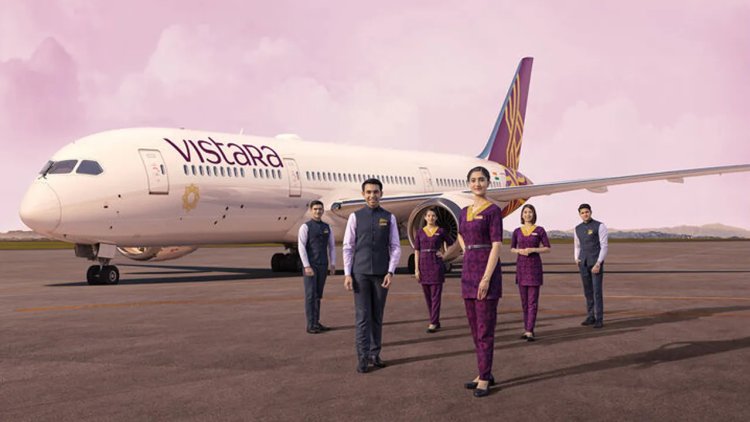Vistara Merges with Air India: A New Era in Aviation
Vistara merges with Air India, redefining Indian aviation. Tata Group consolidates its full-service carrier market dominance, leaving behind Vistara’s legacy and setting new global goals.

In a monumental development for India’s aviation industry, the merger of Vistara with Air India has left many reflecting on the legacy of Vistara, a carrier that redefined air travel in the country. Established in 2013 as a joint venture between Tata Sons and Singapore Airlines, Vistara combined Tata’s rich aviation history with Singapore Airlines' globally renowned service standards. Known for its tagline, “Fly the New Feeling”, and inspired by the Sanskrit word ‘Vistaar’, meaning limitless expanse, the airline was synonymous with elevated travel experiences.
This decision to merge stems from the Tata Group’s vision of creating a unified full-service carrier (FSC) capable of competing on the global stage. Following Tata’s acquisition of Air India in 2022, the group opted to combine Vistara with Air India, ending their separate paths. The move strategically aligns with the group's goal of eliminating route and operational redundancies, as both airlines often operated in overlapping markets with similar fleets.
Under the merger agreement, Singapore Airlines, which previously owned a 49% stake in Vistara, will retain a 25.1% share in the integrated Air India. This positions the airline to expand its footprint across domestic and international markets, with Air India leveraging Vistara’s service reputation and operational expertise.
The merger significantly changes the domestic aviation market, reducing the number of full-service carriers from two to just one – Air India. The Tata Group now holds a monopoly in the FSC segment, while IndiGo remains the dominant low-cost carrier. Together, Air India and IndiGo control nearly 90% of the market share, creating a near-duopoly in the industry.
With no immediate plans for new FSC entrants, the consolidation could lead to higher airfares, particularly for premium services. Industry experts speculate that Tata may capitalise on its dominant position to set higher price points, impacting passenger choices.
While Air India prepares to carry forward the legacy of Vistara, the latter’s departure has stirred nostalgia and respect across sectors. Vistara’s commitment to quality set new benchmarks for customer experience and brand loyalty in Indian aviation. It bridged the gap between luxury and accessibility, leaving an indelible mark on its loyal passengers.
As the skies grow quieter without Vistara, the integrated Air India must shoulder the responsibility of upholding and enhancing the standards that made Vistara a favorite. The merger not only consolidates power under the Tata Group but also marks a new chapter in the evolution of India’s aviation landscape.

 Deepanjali
Deepanjali 










